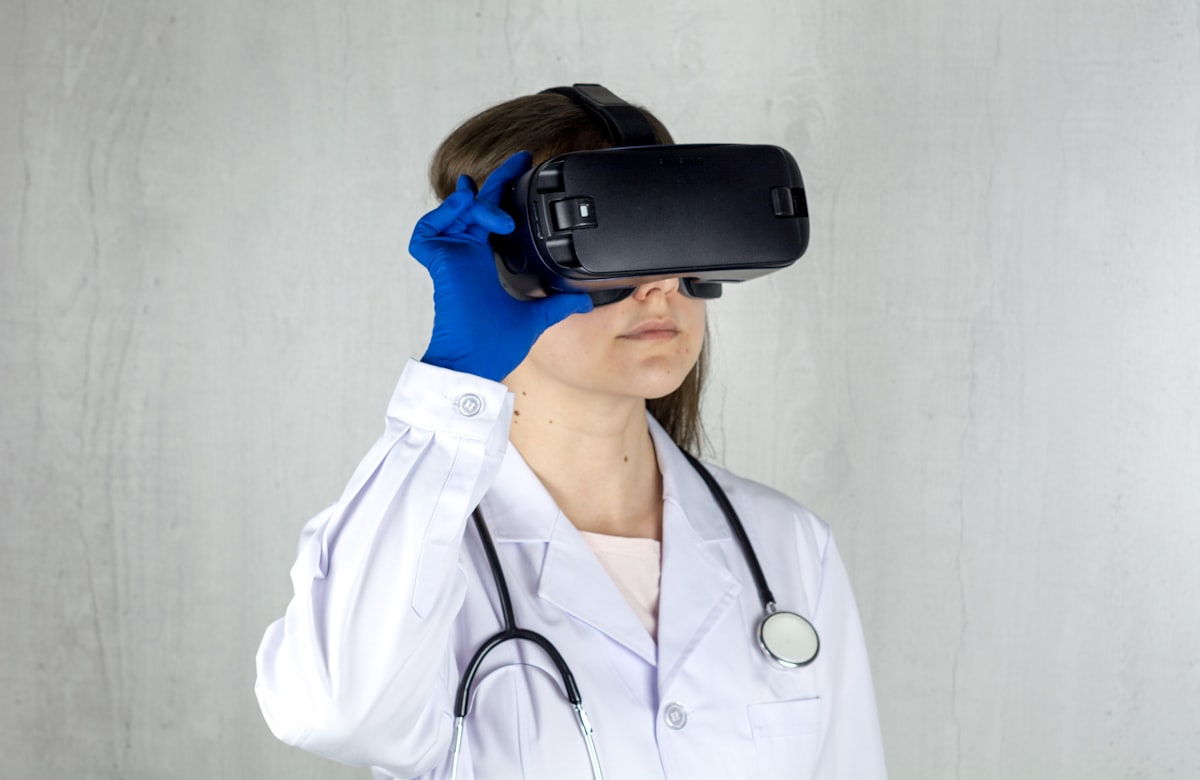The Intersection of Virtual Reality and Healthcare: A Look into the Future
Virtual Reality (VR) has become an increasingly popular technology over the years, with its potential applications ranging from gaming to education. However, one field that has started to harness the power of VR is healthcare.

Virtual Reality (VR) has become an increasingly popular technology over the years, with its potential applications ranging from gaming to education. However, one field that has started to harness the power of VR is healthcare.
The integration of VR technology into healthcare has the potential to revolutionize the way patients are diagnosed and treated. In this blog, we will explore the intersection of virtual reality and healthcare and look into the future of this rapidly growing field.
What is Virtual Reality?
Virtual Reality is a technology that simulates an environment, allowing the user to interact with it as if it were real. It is typically achieved by using a headset or other devices that provide an immersive experience. The technology has been used in gaming, education, and entertainment for a while, but its potential in healthcare is only starting to be explored.
How is Virtual Reality Used in Healthcare?
Virtual Reality has a range of potential applications in healthcare, from patient treatment to medical training. Here are some examples:
Pain Management
Virtual Reality has been shown to be effective in managing pain. By immersing patients in a virtual environment, their focus is diverted from their pain, leading to a reduction in perceived pain levels. Virtual Reality is particularly useful for chronic pain patients who need long-term management.
Medical Training
Virtual Reality provides a safe and controlled environment for medical students to practice procedures without the risk of harming real patients. Medical students can practice surgeries, invasive procedures, and other medical interventions in a virtual environment, allowing them to refine their skills before performing them on real patients.
Mental Health Treatment
Virtual Reality can be used to treat a range of mental health conditions, such as anxiety disorders and post-traumatic stress disorder (PTSD). By creating virtual environments that mimic real-life situations that trigger anxiety or PTSD, patients can safely confront their fears and learn coping mechanisms.
Rehabilitation
Virtual Reality can also be used in rehabilitation programs to help patients recover from injuries or surgeries. By immersing patients in virtual environments that mimic real-world scenarios, patients can practice everyday activities that they may struggle with, such as walking up stairs or getting in and out of a car.
The Future of Virtual Reality in Healthcare
The potential applications of Virtual Reality in healthcare are vast and varied. Here are some future possibilities:
Telemedicine
Virtual Reality can be used to create a remote consultation experience that is almost as good as an in-person visit. Patients can be virtually transported to a doctor's office, and doctors can examine patients from afar, potentially saving time and resources.
Enhanced Surgeries
Surgeons can use Virtual Reality to simulate procedures and plan surgeries. By creating a virtual model of the patient's body, surgeons can practice complex surgeries, test out different approaches, and optimize their surgical plan before the actual surgery.
Better Patient Education
Virtual Reality can be used to educate patients about their medical conditions and treatment options. By creating interactive virtual environments, patients can better understand their condition and visualize the effects of different treatments, leading to better-informed decisions.
Conclusion
Virtual Reality has the potential to revolutionize the healthcare industry. From pain management to medical training, the technology has already shown its efficacy in several areas. As the technology continues to advance, the possibilities for its use in healthcare will only continue to expand.
Exciting times ahead!





